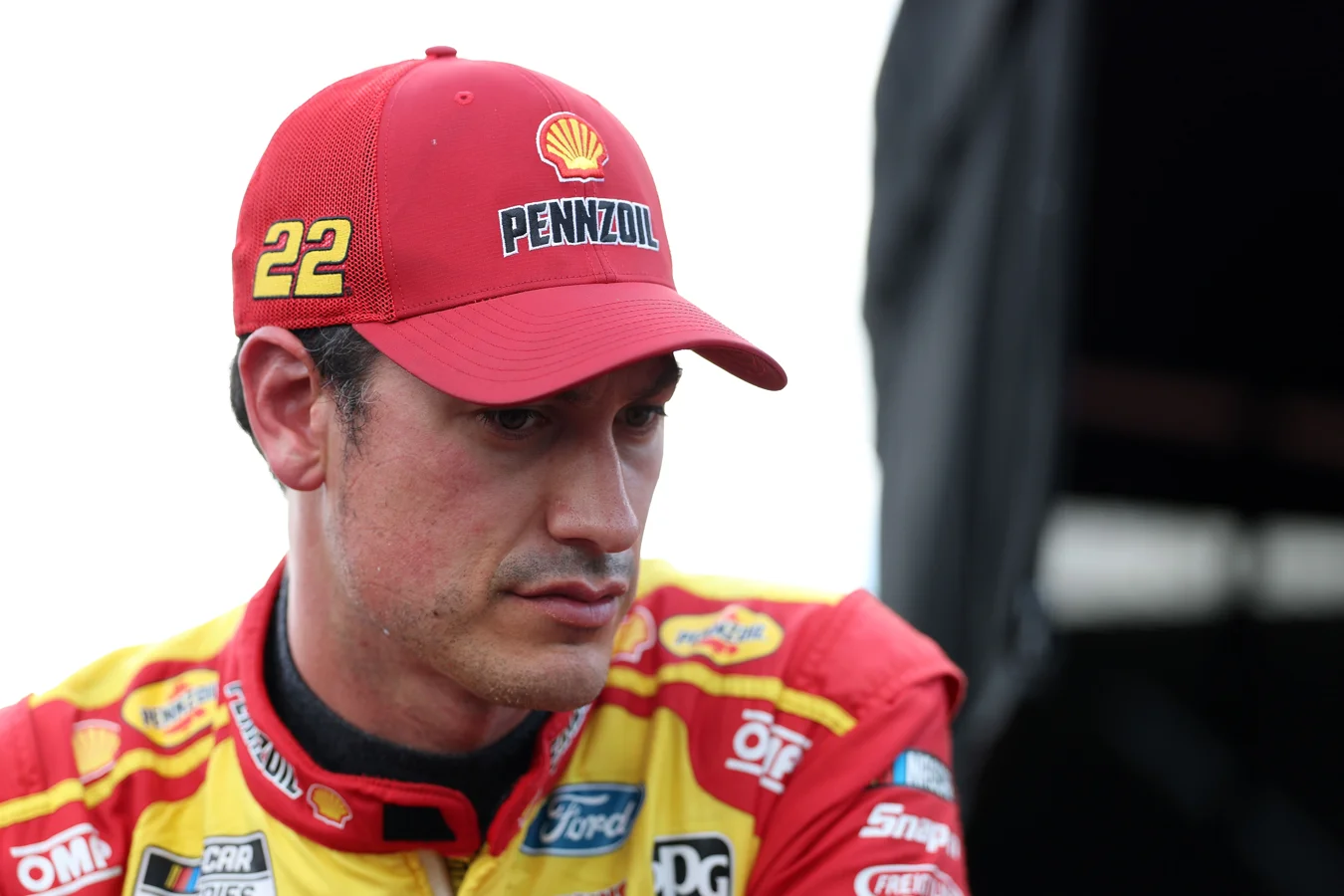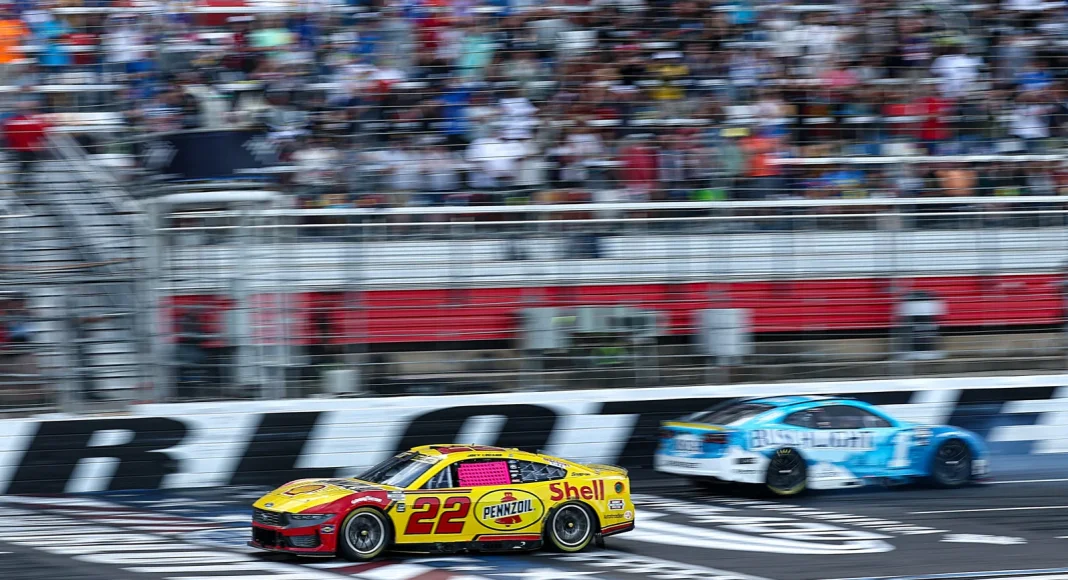Joey Logano and Denny Hamlin have spoken out after a turbulent finish at the Charlotte Roval, saying NASCAR needs to clarify what counts as race manipulation. In recent days, the intense scrutiny around the playoff race has led to calls for concrete rules, as confusion mounts following an incident that determined playoff advancement by a single point—putting the Joey Logano NASCAR race manipulation debate front and center.
Intensity Flares After Charlotte Roval Crash
The Charlotte Roval race ended in chaos, and drivers left the track facing major criticism. Denny Hamlin became the focal point after a last-lap collision with Ross Chastain. That crash cost Chastain the chance to move into the Round of Eight by just one point, a point that allowed Joey Logano to sneak into the semifinal round. The dramatic finish led to disagreement and confusion throughout the garage and among fans, particularly because both Chastain and Logano represent rival teams and car manufacturers—Chastain with Trackhouse Racing and Chevrolet, Logano with Team Penske and Ford, and Hamlin with Joe Gibbs Racing and Toyota.
Hamlin, once out of his damaged car, faced immediate blame, but he stood his ground and argued that he did not see Chastain, misjudged his spot, and had no reason to favor one driver over another, given the competing interests of the teams involved. The consequences were clear: if Chastain had managed to advance, Logano would have been eliminated from Cup championship contention and would not have a shot at defending his title, which he has won twice in three years and three times in the last seven seasons. Despite the fallout, as NASCAR progresses into the semifinals in Las Vegas, Logano has another chance to fight for his fourth championship, all while the shadow of the controversial crash lingers.

“Am I allowed to make a decision, being that I have no allegiance to either (Chastain or Logano), because I would argue that I earn the right to decide,”
— Denny Hamlin, Joe Gibbs Racing driver.
Hamlin has reasoned that drivers in his position, already secure in the playoffs, may legitimately influence outcomes. He emphasized that the dynamics at play are not unique to the Roval, referencing how drivers on superspeedways sometimes assist specific competitors for strategic reasons.
“They put themselves, unfortunately, in a vulnerable spot where I get to decide,”
— Denny Hamlin, Joe Gibbs Racing driver.
“How’s it any different than like a superspeedway? If I know I can’t win, I’m picking which car I’m going to push to the finish. I’m probably going to push the one that I think is I don’t want to get five bonus points, so we always have those scenarios where we’re picking and choosing who we’re helping, but that and the wrecking for sure,”
— Denny Hamlin, Joe Gibbs Racing driver.
Logano Responds to Manipulation Claims and Sees Gray Areas
Joey Logano, whose fate advanced thanks to the incident between Hamlin and Chastain, found himself the beneficiary in the playoff drama. Logano, aware of the criticism claiming he advanced only because the playoff system is easily influenced, acknowledged the criticism but felt it was misplaced. His advancement, he argues, was due to racing circumstances rather than outright manipulation.
“It’s a slippery slope either way because where is the line? Is just telling somebody where you are in points and what’s going on around you, is that too far?”
— Joey Logano, Team Penske driver.
Logano went on to say that, in his view, sharing points information with drivers should not be considered manipulation since the final decisions remain with the driver. He stressed the importance of distinguishing between relaying information and instructing a driver on how to race, believing the former is reasonable and the latter crosses a line.
“At that point, it’s up to the driver to make the best decisions for whatever they’re trying to accomplish, which is usually winning the race. I think just feeding someone data it still leaves it in the driver’s hands to do what they please with it. It’s just giving information. That’s all you’re doing,”
— Joey Logano, Team Penske driver.
Calls for Official Guidance Intensify
While opinions are clearly divided, Logano admits he has not approached NASCAR directly to discuss the issue of late-race manipulation, at least yet. With only a handful of Cup events remaining this season, he acknowledges growing calls for the governing body to set unambiguous rules that would address these types of playoff situations.
“I haven’t talked to (NASCAR) about this in particular, no,”
— Joey Logano, Team Penske driver.
He further explained that the conversation about defining what is fair versus manipulative has become increasingly relevant. He suggested that clarity is needed and hopes NASCAR can provide it so drivers know what is allowed and what isn’t.
“Like I said, I think if you’re just saying what’s going on, it’s probably OK, I think. I do think there are some gray lines of, to your point, where is the black and white of this you can do and this you can’t do. I’m sure we could probably tighten some of that up a little bit and just help us understand that,”
— Joey Logano, Team Penske driver.
What Lies Ahead for NASCAR’s Playoff System?
As NASCAR heads into the high-stakes Round of Eight in Las Vegas, questions about the legitimacy of playoff outcomes remain unsettled. The aftermath of the Chastain-Hamlin crash, which ultimately benefited Logano, has raised tough questions about how much influence drivers should have on each other’s fortunes when their own championship status is secure. With prominent drivers like Denny Hamlin and Joey Logano pushing for clearer, more enforceable rules regarding race manipulation and playoff integrity, it is likely that NASCAR officials will face increasing pressure to draw lines that minimize both gray areas and accusations of favoritism or unfair competition during the season’s most critical moments.
The coming weeks may see further debate among NASCAR’s drivers, teams, and league officials about what constitutes manipulation, how much communication is permissible, and what specific scenarios should be governed by new rules. The future of championship racing may depend on the clarity—and fairness—of these impending guideline changes.



